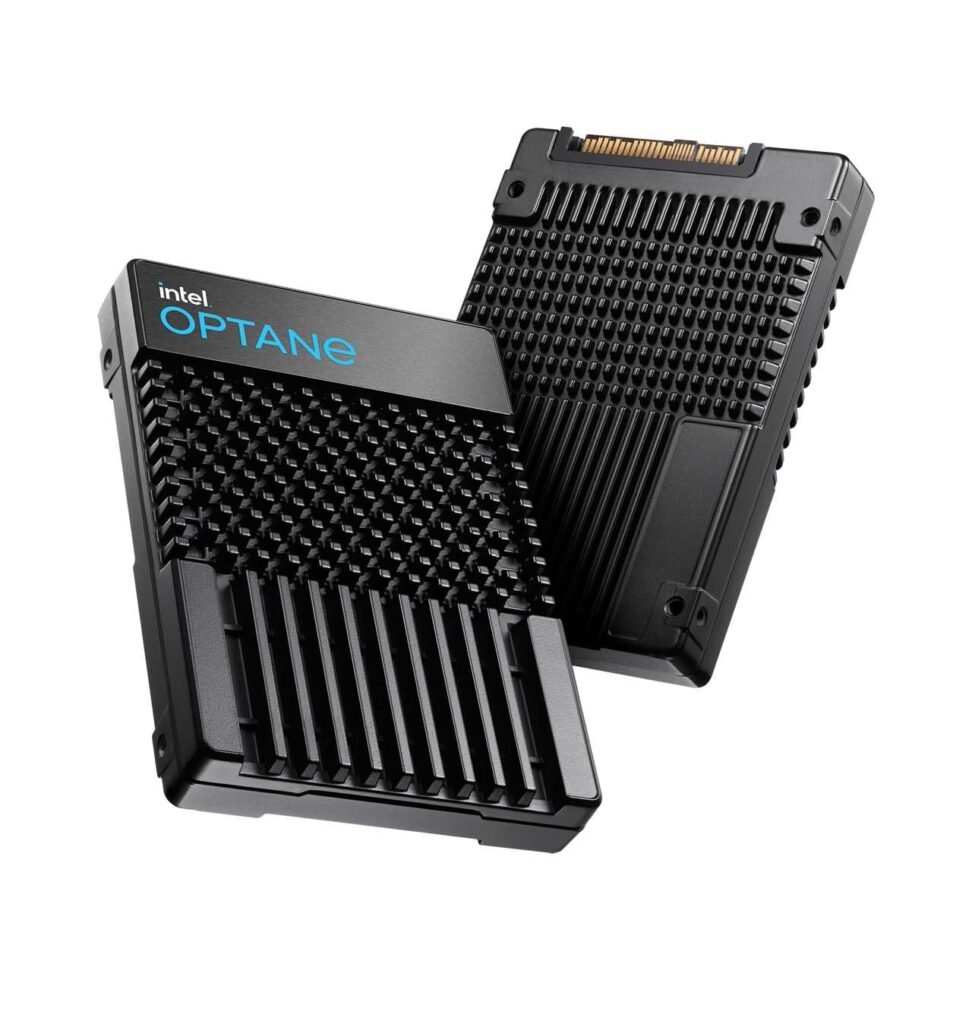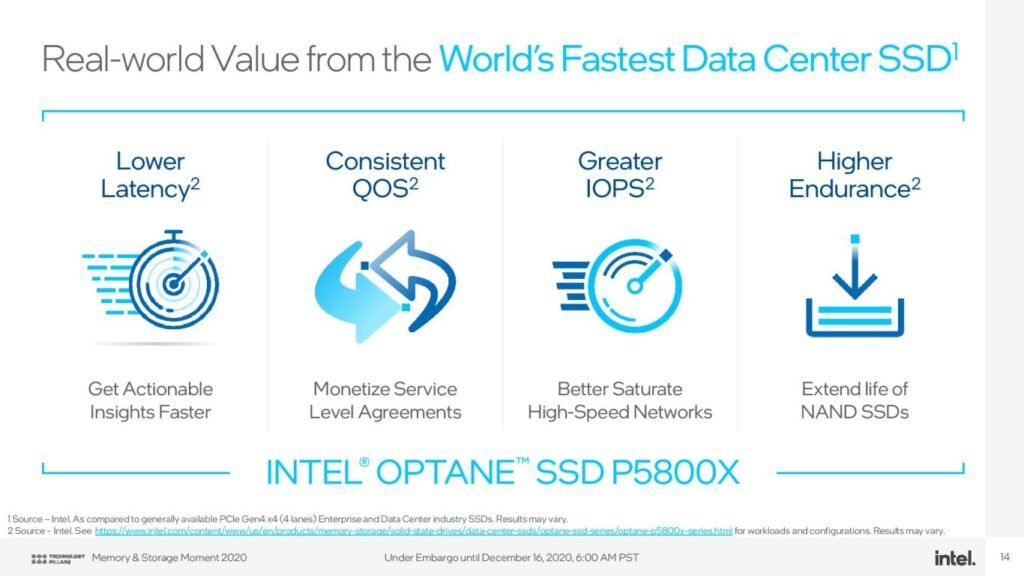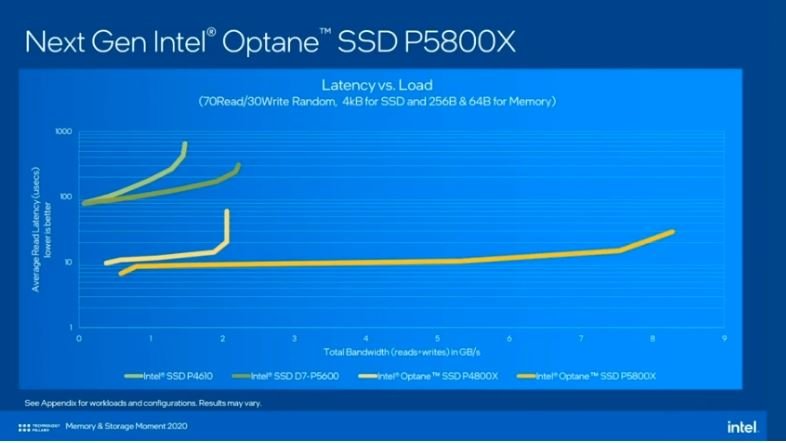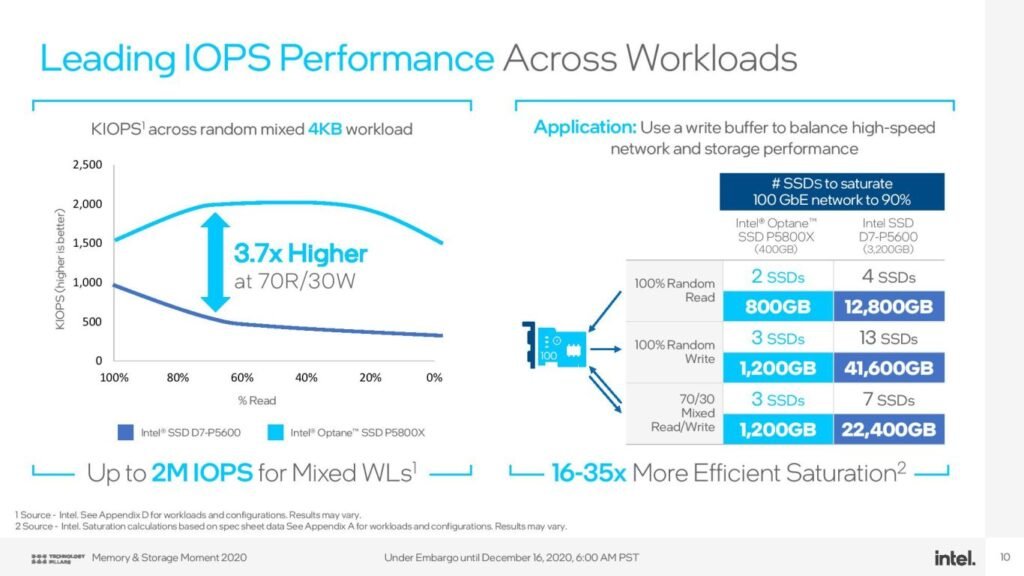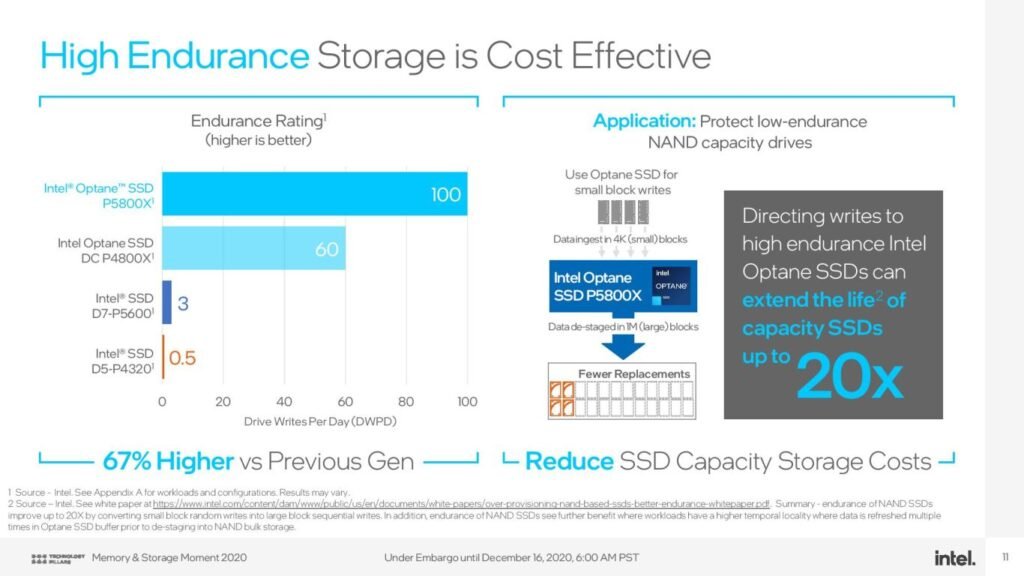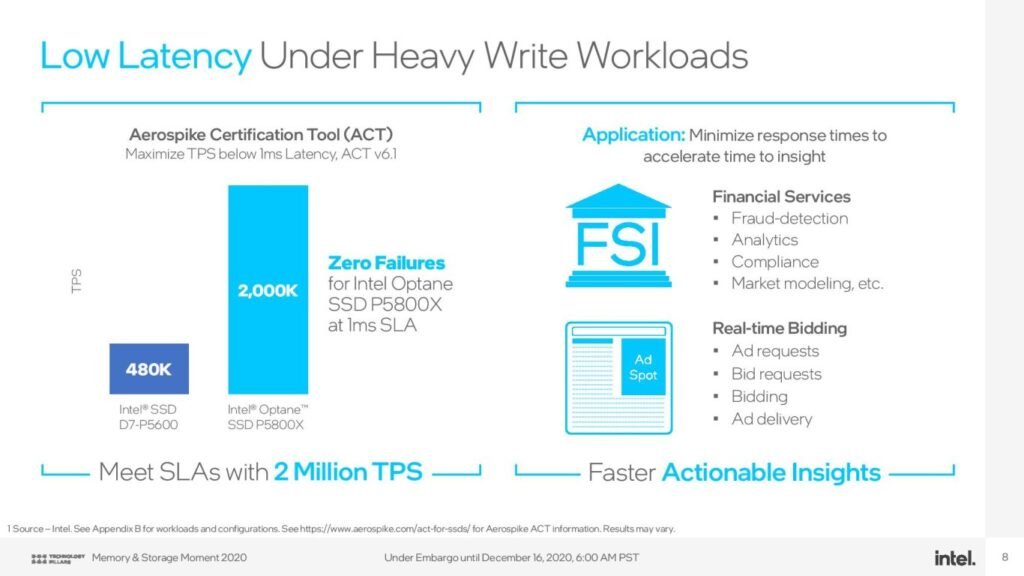Intel has taken Optane to the next level as it launches the world’s fastest SSD i.e. Optane SSD P5800X. This next-gen Optane SSD leverages the PCIe 4.0 interface, 2nd-gen Optane media, and an all-new SSD controller which enables it to deliver a truly astounding performance and endurance specifications.
If compared to the 1st-gen Optane DC P4800X, Intel’s new P5800X offers an impressive 3X performance in random read/write workloads, with peaking at 1.5 million 4K random IOPS, and 3X more sequential performance at a peak of 7.2 GB/s. This new drive also delivers up to 4.6 million IOPS in random 512B workloads, with up to 1.8 million IOPS in mixed workloads.
If not had enough, this drive also offers up to 67% more write endurance than P4800X, and now peaks at 100 DWPD (drive writes per day). Making it the most endurant SSD in the market. On a related note, there are very few ‘regular’ NAND-based SSDs that offer even 10 DWPD of endurance, meaning that Intel’s P5800X is in the league of its own.
As stated in staring the P5800X leverages Intel’s 2nd-gen Optane media, which comes with 2 layers instead of one, and a new PCIe 4.0 x4 SSD controller allowing the company to finally break the shackles of PCIe 3.0 interface.
For now, Intel hasn’t shared the finer-grained technical specifications of the P5800X’s new PCIe 4.0 SSD controller. But still, we know that (thanks Tomshardware) the drives are likely to come in the tried-and-true U.2 form factor in capacities of 400GB, 800GB, 1.6TB, and 3.2TB.
The exotic underlying 3D XPoint technology of Optane-powered drive provides far more speed and endurance than any NAND-based SSD, delivering a level of performance that lands between flash SSDs and system memory. These new drives are also designed to offer a superior QoS (quality of service) over competing NAND-based SSDs, i.e. performance consistency is a key focus area here. Intel’s P4800X had already established itself as the most consistent SSD in the market, but according to Intel, the new P5800X will extend that with up to a 40% better QoS in 4K random read workloads.
However, one of the most valuable aspects of an Optane SSD is its ability to deliver tremendously consistent performance even if it is under heavy load. As you can see above, that the P5800X reaches new heights with more than 8 GB/s of throughput under the heavy load, easily taking over all the NAND-based SSDs on this logarithmic scale.
Intel’s P5800X can even outcast what we typically classify as the throughput limit of the PCIe 4.0 bus. And that comes as a byproduct of the drive’s ability to leverage PCIe’s bi-directional interface. If you want higher performance during mixed workloads by the drive, you have to simply saturate both sides of the interface at full line-rate read and write performance. As you can see above the ability of drive in the 70/30 read/write workload outlined above where the SSD peaked at 2 million IOPS. Allowing the drive to deliver 3.7x more performance than its previous-gen model in mixed random workloads.
Intel hasn’t released the pricing information for this yet, but the company says the drives are already shipping to OEM companies.

